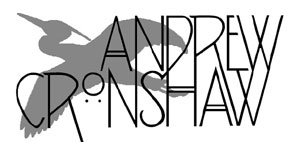
- Andrew Cronshaw website -
- Andrew Cronshaw MySpace -
- Cloud Valley Music website -
- Andrew Cronshaw website -
- Andrew Cronshaw MySpace -
- Back to Reviews Introduction page -
Written in Folk Roots issue 134/135, 1994
VALKEAPÄÄ, BÆR, PAAKKUNAINEN, KOTILAINEN
Dálveleaikkat - Wintergames
DAT DATCD-17
There aren't many Sámi, but they're making a strong and influential statement in
music and visual art these days, and one who has over a long series of
recordings been showing the way in terms of taking advantage of the
possibilities of the CD - very long tracks, extremely quiet sections, and also
its potential for making a visual statement - is Nils-Aslak Valkeapää. His
works, usually in collaboration with Finnish musicians Seppo Paakkunainen and
Esa Kotilainen, have represented an exploration of the North Pole of minimalism
in terms not only of their music but also of his graphic and photographic work,
which carries over from his books of art and poetry into the CD packaging.
Valkeapää isn't the most vocally adventurous male
joiker - I'd recommend a listen to, for example, Wimme Saari for that - and his
live performances are usually quiet and unassuming, from what I've seen of them,
but they do leave one with a sense of possibilities, wilderness still to be
explored, that here is a whole other way of approaching music. He has played a
significant part in creating the cultural environment and respect which gives
the new Sámi art and music its power-base, and he's still exploring.
This new album, where vocals are alternated with
Johan Anders Bær, and which includes the joik which Valkeapää performed at the
start of the remarkably beautiful opening of the Winter Olympics, seems to me to
be probably the most satisfying yet. Tracks are generally shorter than on
previous albums, but they're still strangers to the world of the 3-minute hit.
This music deals in slow change, almost glacial time-spans, and the length of a
CD does allow time to stop and ponder, as one does while spending time with
nature, allowing the subtleties to seep in, becoming fascinated by the
previously ignored - but can a recording, the same each time it's played,
provide the same hidden depths?
Paakkunainen and Kotilainen seem to have at last
arrived at ways of accompanying which merge with the joiks and don't keep
triggering jazz or classical associations. Here percussion textures (dominant
rhythms only when the joik implies) with interweaving and interjections mainly
of sax and synths provide an open landscape, and even when instruments
occasionally emerge from their main role as a sort of activated silence they
echo the joiks' melodic forms without appearing to crave centre stage.
Valkeapää's previous album Goase Dusse, The Bird Symphony, may well have
given some pointers; that's all it featured - birds recorded in Sámiland - no
singing, no instruments.
Like the Sámi population, this music is sparse
yet remarkable and resilient, and perhaps it has something which the main body
of European musics moved away from as they became preoccupied with the
enticements of polyphony.
© 1994 Andrew Cronshaw
You're welcome to quote from reviews on this site, but please credit the writer and fRoots.
Links:
fRoots - The feature and
review-packed UK-based monthly world roots music magazine in which these reviews
were published, and by whose permission they're reproduced here.
It's not practical to give, and keep up to date,
current contact details and sales sources for all the artists and labels in
these reviews, but try Googling for them, and where possible buy direct from the
artists.
Helsinki's Digelius Music
record shop is a great source of Finnish roots and other albums.
CDRoots.com in the USA, run by
Cliff Furnald, is a reliable and independent online retail source, with reviews,
of many of the CDs in these reviews; it's connected to his excellent online magazine
Rootsworld.com
For more reviews click on the regions below
NORDIC
BALTIC
IBERIA (& islands)
CENTRAL & EASTERN EUROPE, & CAUCASUS
OTHER EUROPEAN AMERICAS OTHER, AND WORLD IN GENERAL
- Back to Reviews Introduction page -